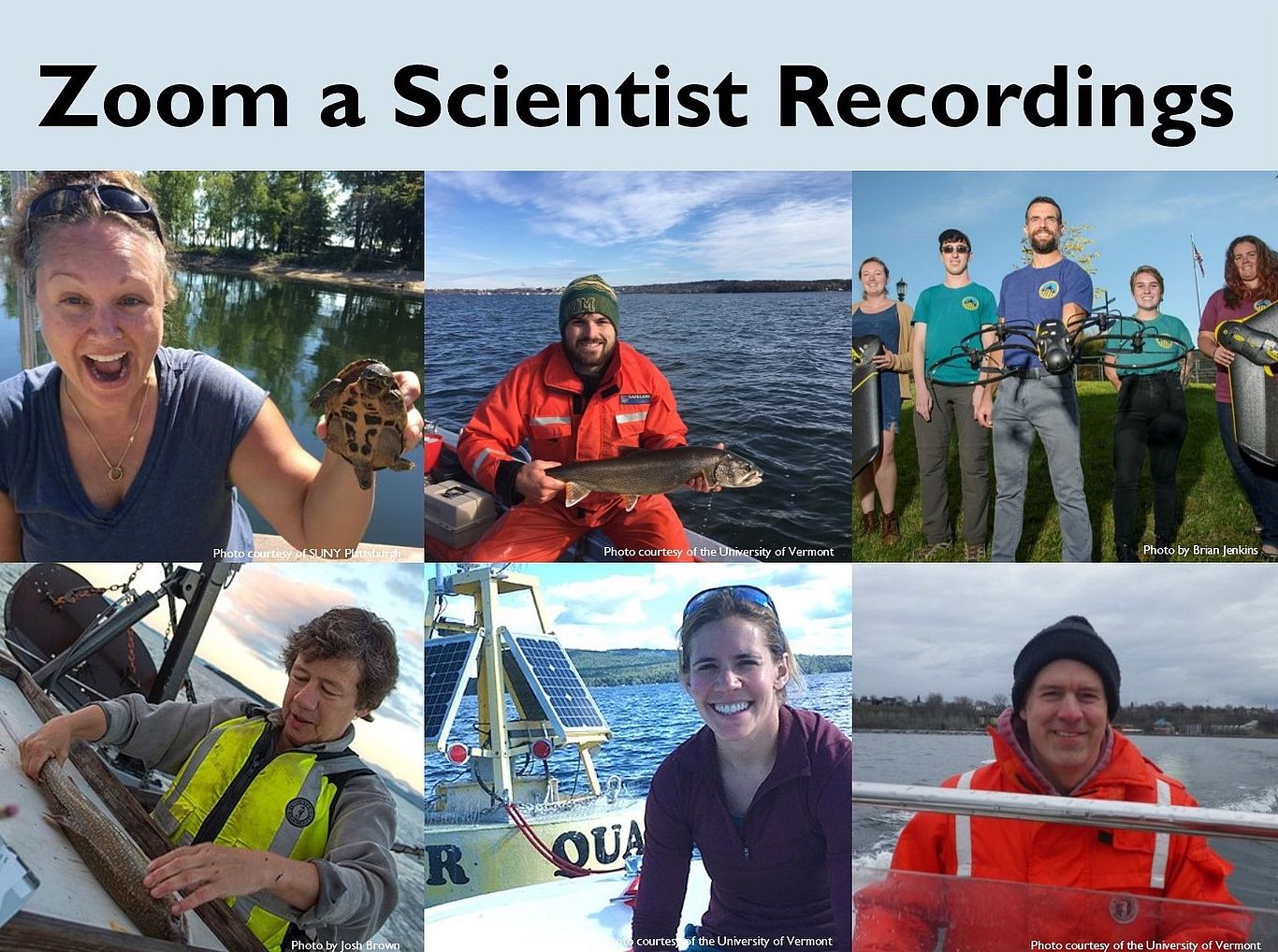Zoom a Scientist
Did you miss a “Zoom a Scientist” session? Don't worry! All the webinars are recorded and can be accessed via Youtube! Want to learn more about microplastics, climate change, or aquatic invasive species? Wonder how prepared we are for an oil spill or what fish do in winter? Curious about how scientists use drones and photogrammetry to learn about the lake? If you want to watch any of the programs you didn’t catch earlier, tune in again or share them with others, you’ll find links below to the livestream recordings of past presentations. “Zoom a Scientist” is put together by Lake Champlain Sea Grant, one of the Lake Champlain Committee’s partners in the work for clean water. Check out the programs to help slake your thirst for lake knowledge!

March 31, 2020 – Basin Basics: Watersheds and the “State” of Lake Champlain
Which sections of Lake Champlain exceed phosphorus standards, how many aquatic invasive species are in the watershed and how do most of them arrive here? How often do lake beaches close and why? How healthy are lake fish? Learn the answers to these and other questions from Lake Champlain Basin Program Director Eric Howe and Education and Outreach Coordinator Colleen Hickey.
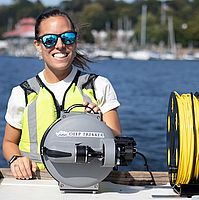
April 3, 2020 – Watershed Science 101
Ashley Eaton, Nate Trachte and Caroline Blake of Lake Champlain Sea Grant’s Education Team explain the complex interactions that play a role in the health of a watershed. They explore monitoring techniques for lakes and streams and discuss what individuals can do to protect local watersheds.
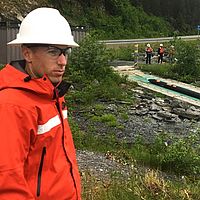
April 7, 2020 – Oil Spill!
U.S. Coast Guard Lieutenant Commander Jason Scott is conducting graduate research at the University of Vermont focused on oil spill preparedness in the Lake Champlain Basin. Jason will cover the basics of oil production and transport as well as the history of recent Lake Champlain oil spills. Learn what oil travels through the region, how oil spills occur, the environmental impacts and clean-up and preventative actions.
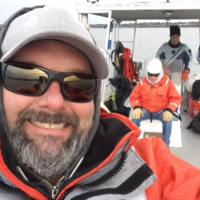
April 10, 2020 – Photogrammetry 101
Chris Sabick, the Director of Research and Archaeology at the Lake Champlain Maritime Museum, will present 3-D models of shipwrecks, based on field research, with examples from Lake Champlain and beyond. Learn how photography is used in surveying and mapping to measure distance between objects.
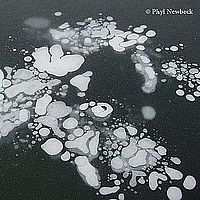
April 14, 2020 – What Do Fish Do in the Wintertime?
Winter in the North Country is cold and dark. Unlike humans, fish in northern lakes can't migrate to Florida and wait for spring. Instead they have to adapt to the conditions. Where do they go to find warm water? Does their metabolism dip as the temperatures dive? University of Vermont Master of Science Candidate Ben Block will share how fish handle the chill, the lack of light and little food during wintertime.

April 17, 2020 – Climate Change in the Lake Champlain Basin: What's Already Happened and Where We're Headed
We often think about climate change as a distant consequence of today’s actions, but climate change is here and we are already experiencing the impacts. Climatologist Dr. Eric Leibensperger of the State University of New York at Plattsburgh will highlight changes that have already been observed and others that are projected to occur in the Champlain Valley.
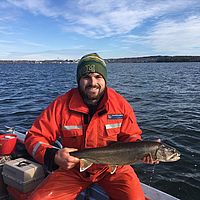
April 21, 2020 – A Fish's Story: Following Lake Trout Movement around Lake Champlain
Studying aquatic organisms can present challenges due to limits in direct observation. University of Vermont Master of Science Candidate Matt Futia will lead us through some technological advances that enable scientists to track individual fish to understand their movement across time. Learn what technologies are being employed and how they help us understand how Lake Champlain fish behave and use the resource.
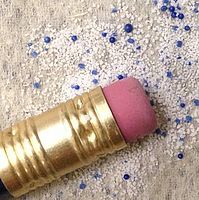
April 24, 2020 – Microplastics in Freshwater Systems
Numerous studies document the physical and toxicological effects of plastic in the environment. Microplastics—those tiny plastic fragments of less than 5 mm in length—are of particular concern because they have the potential to be ingested by a much wider range of organisms than large plastic debris, making them and the chemicals they carry bioavailable throughout the food chain. Dr. Danielle Garneau has analyzed Lake Champlain wastewater treatment effluent for microplastics and mapped microplastic distribution in the lake’s zooplankton. She’ll share findings from her research and some thoughts on what can be done to address the problem.
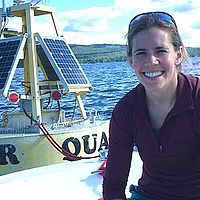
April 28, 2020 – Long-term Effects of Climate Change on Lakes and the Importance of Winter Sampling
This episode looks at some of the research summarizing the effects of climate change and extreme events on lakes. What are some of the effects of climate change and extreme events on lakes? What happens to lakes during winter and why do most scientists only sample lakes in the summer? University of Vermont Limnologist Dr. Jennifer Brentrup will discuss some long-term studies on lakes and why sampling lakes year-round, especially under-ice, is becoming increasingly important. Learn how dissolved oxygen levels are used to estimate lake metabolism under-ice and other neat research methods.
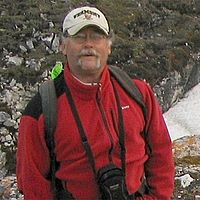
May 1, 2020 – Sensing What is in the Water: Next-generation Sensor Technologies for Water Quality Monitoring
Lake Champlain Sea Grant’s Director Dr. Breck Bowden will review how researchers measure water quality, traditional sampling methods, and how new technologies are providing new insights. He’ll talk about the both the challenges and emerging opportunities that sensor technologies provide for water quality monitoring.

May 5, 2020 – But How Do We Know? Sampling Fish to Understand What's Happening with Populations
Water is an alien habitat for humans; most information about fish is collected by remotely sampling (bringing fish to the surface to study). How do scientists use those samples of fish to understand whether fish populations are healthy? Are they increasing or decreasing in abundance? How do we interpret the data from a few fish to a whole lake? What new methods are being developed for observing fish? University of Vermont Fisheries Biologist Dr. Ellen Marsden will help answer these and other questions about current fisheries research on Lake Champlain.

May 8, 2020 – Squeezing the Middle of Lake Champlain's Food Web
The recent surge in natural reproduction by lake trout is a success story, but can too much success be a bad thing? UVM Rubenstein Ecosystem Science Laboratory's Director, Dr. Jason Stockwell research explores the interaction of lake trout natural reproduction and lake trout stocking strategies to evaluate if too many lake trout mouths will be too much for prey fish populations. How might the potential for a quagga mussel invasion effect food web energy and shunt production to the bottom of the lake.
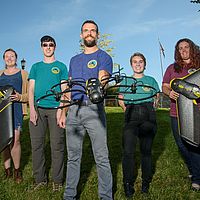
May 12, 2020 – Mapping our Streams and Lakes With Drones
You have likely seen a drone fly by and maybe you even own one to take pictures or shoot video, but did you know we can also use drone technology for mapping and monitoring our streams and lakes? Jarlath O'Neil-Dunne, Director of the University of Vermont’s Spatial Analysis Laboratory, will share how drones are being used to map invasive species, respond to floods, and track changes in streams in the Lake Champlain watershed.
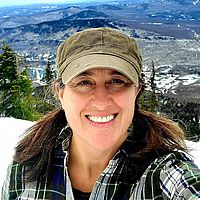
May 15, 2020 – What does Vermont Agency of Natural Resources Do?
Tami Wuestenberg, of the Vermont Agency of Natural Resources guides viewers through the agencies’ departments and divisions from the Governor on down to her role as an Environmental Analyst. She covers the role the agency plays in regulation, enforcement, management and research as it undertakes its mission to protect Vermont’s natural resources.
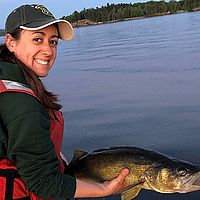
May 19, 2020 – Cisco Science: Conservation and Restoration of Native Species in the Great Lakes
Native fish are critical to maintaining healthy ecosystems and healthy economies. In the Great Lakes ciscoes, a group of native prey fish, have been identified as a top priority for conservation and restoration efforts. Hannah Lachance, an International Fisheries Science Specialist for the National Oceanographic and Atmospheric Administration (NOAA) will talk about some of the research efforts designed to help inform conservation and restoration efforts for ciscoes in Lake Superior and Lake Ontario. The research focuses on the early life stages (eggs and larvae) and uses a range of field and laboratory methods.
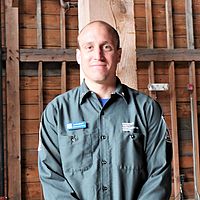
May 22, 2020 – Green Stormwater Infrastructure - Incorporating Natural Systems into the Developed Landscape
What is Green Stormwater Infrastructure or GSI and how can it be used to slow down and filter stormwater? Justin Geibel, Conservation Water Quality Project Manager at Vermont Youth Conservation Corp, will answer those questions and explain how we can better incorporate aspects of natural systems into our developed landscape to mitigate development impacts. Join him in an exploration of GSI technology and get a closer look at an installation that is helping to support healthy communities and a healthy lake.

May 26, 2020 – Salting Our Waters
Deicing salts – most often sodium chloride - used during winter road maintenance can contribute to increasing chloride concentrations in water bodies like Lake Champlain. This added salt can impact fish and other aquatic life, and pollute our drinking water. University of Vermont Professor Dr. Kris Stepenuck will share information on how people can monitor a local stream to watch for impacts over time, and discuss what UVM students and volunteers in the Lake Champlain Basin have found from monitoring area small streams this winter and in previous years.
